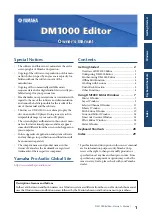
networks where ePolicy Orchestrator may manage agents in remote sites over lower-speed
WAN or VPN connections.
Figure 15: SuperAgent and Broadcast Wake-Up Calls
1
Server sends a wake-up call to all SuperAgents.
2
SuperAgents send a broadcast wake-up call to all agents in the same broadcast segment.
3
All agents (regular agents and SuperAgents) exchange data with the server.
4
Any agents without an operating SuperAgent on its broadcast segment are not prompted
to communicate with the server.
Best practices
To deploy sufficient numbers of SuperAgents to the appropriate locations, first determine the
broadcast segments in your environment and select a system (preferably a server) in each to
host a SuperAgent. Be aware that agents in broadcast segments without SuperAgents do not
receive the broadcast wake-up call, and therefore, do not call in to the server.
Similar to the regular agent wake-up call, the SuperAgent wake-up call uses the SPIPE protocol.
Ensure the agent wake-up communication port (8081 by default) and the agent broadcast
communication port (8082 by default) are not blocked.
Distributing Agents to Manage Systems
Agent-server communication
McAfee ePolicy Orchestrator 4.0.2 Product Guide
68
















































